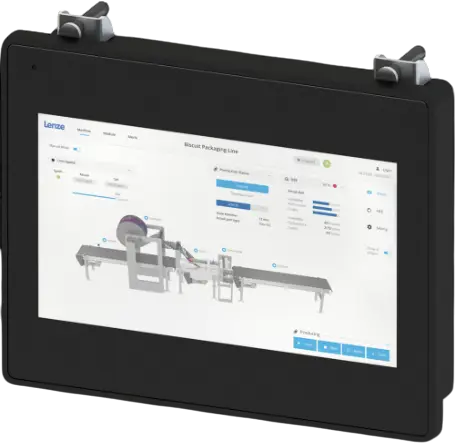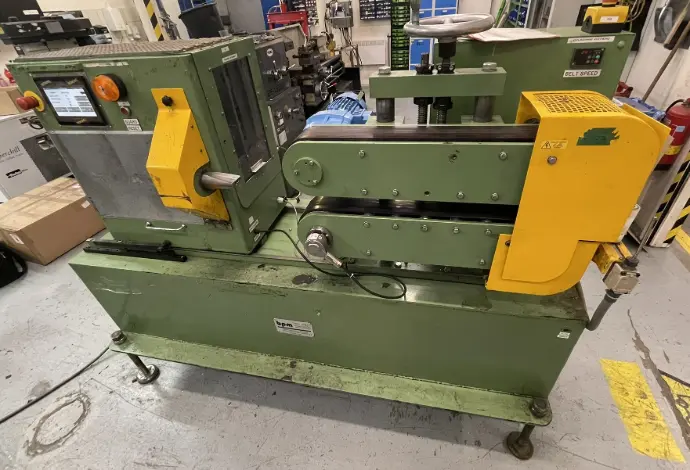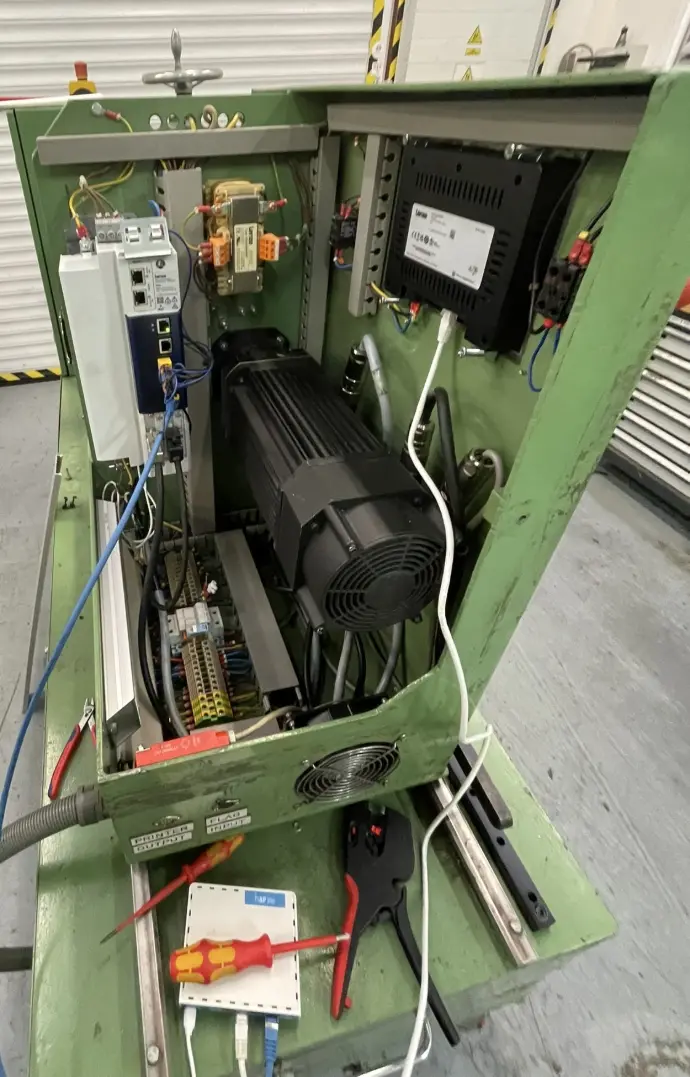The device is designed for cutting plastic trims for the automotive industry. It consists of two main sections: the feeding section and the cutting section. The feeding section comprises a pair of opposing belt conveyors that ensure precise material feeding; their distance and pressure are adjustable depending on the trim type. The cutting section includes a mold for material fixation and a cutting knife that performs precise cuts to the required lengths. As part of our retrofit, we have modernized the cutting section of the device.
CUSTOMER REQUIRMENTS
- Replacement of the frequency inverter, motor and display
- Replacement of the old control system
- Complete reprogramming of the cutting process
- Verification of the machine´s safety funcionality
USED COMPONENTS
Lenze i950 servo inverter
- Integrated PLC (built -in control system according to IEC 61131-3) - allows local control of the application without the need for an external PLC
- Support for decentralized control - part of the logic and control can be executed directly within the drives
- Safety functions - for example STO ( Safe Torque Off ) and other expandable safety modules
- Flexible communication interfaces - EtherCAT, PROFINET and others
- Suitable for servo applications - precise positioning, synchronization and dynamic applications

Lenze v430 7"
- Lenze v430 HMI (Human-Machine Interface) — provides an intuitive and user-friendly interface for visualizing and controlling machine processes
- High-resolution touchscreen — offers a clear and precise display for real-time monitoring and control, ensuring excellent readability even in demanding industrial environments
- Compact and robust design — designed for installation in control panels, with a slim profile and a high degree of protection (e.g., IP65 front), making it suitable even for harsh operating conditions
- In this project, the visualization runs via WebVISU.

CONTROL CABINET
During the machine modernization, the original frequency inverter in the control cabinet was replaced with a new, above-mentioned model, featuring extended functions (e.g., integrated PLC, safety functions such as STO, and flexible communication interfaces).
The original HMI unit was replaced with a new touchscreen panel (Lenze v430), improving operator ergonomics and enabling real-time diagnostics.
The motor was replaced on a "one-to-one" basis, with the new motor matching the original mechanical and electrical parameters (power, speed, mounting dimensions), but offering higher efficiency and more reliable operation, thus reducing the risk of unplanned downtime.
The entire control cabinet was thoroughly overhauled — all non-functional or worn components (e.g., contact blocks of pushbuttons, terminal blocks, circuit breakers) were identified and replaced.
As part of the modernization, the machine safety system was completely rewired, including the verification of emergency stop functions and the safety chain of the machine guards.


PROGRAMING
As part of the control system development, a completely new application solution was created for controlling the cutting device, including a custom HMI visualization. Unlike traditional architectures with separate PLC and HMI components, the implementation was carried out directly within the intelligent frequency inverter Lenze i950, which simultaneously executes both logic control and visualization via the integrated application environment.
Since this is a high-speed cutting machine requiring cutting accuracy in the range of 0.1 mm to 0.5 mm depending on the cut length, a specialized function block — FAST CrossCutter from the Lenze FAST Application Software library — was used.
This block is designed for flying shear/flying knife applications and ensures:
- generation of a synchronization cam profile (CAM) for the motion of the cutting tool,
- precise timing and motion control based on the current feed rate,
- cyclical synchronization with the main axis (feeding roller).
The reference signal for the main axis is derived from an incremental encoder mounted on the feeding roller, which acts as the master axis in the CAM system. The cutter (slave axis) is synchronized with this master axis through the generated cam profile, providing:
- uniform distribution of cuts without the need to stop the material,
- minimization of mechanical stress at high speeds,
- precise repeatability of cuts in real time, even during dynamic speed changes.
The entire system is operated via the Lenze v430 HMI interface, which provides process control, real-time status monitoring, and parameter adjustment. The visualization includes integrated alarm handling for fault conditions and safety circuit interruptions, as well as tools for precision calibration such as cut length adjustment, offset correction, and synchronization tuning.


